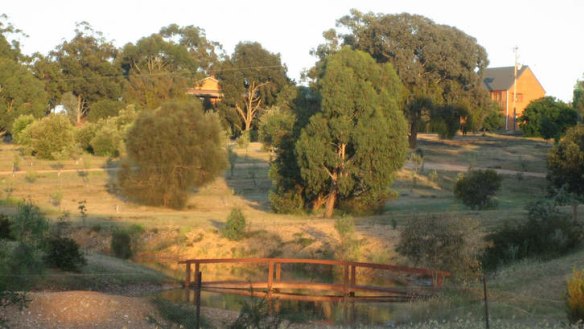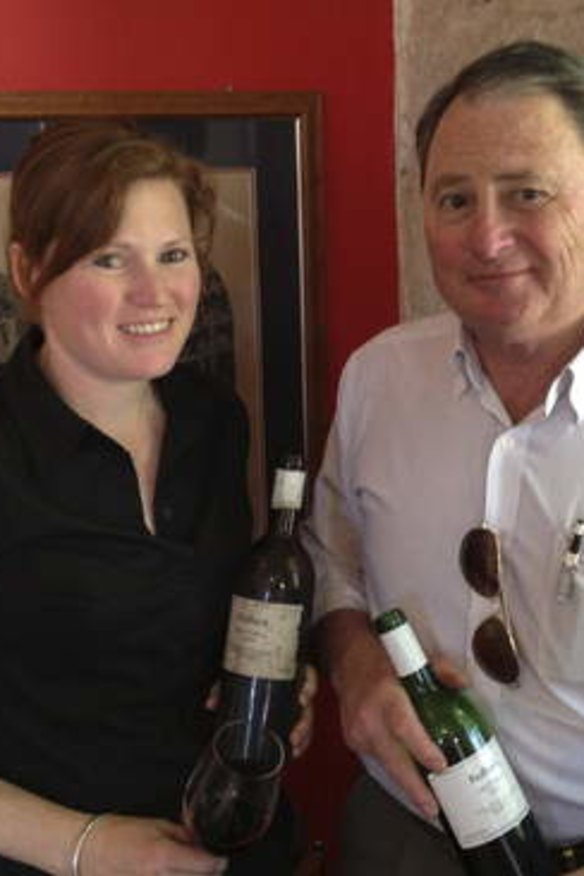Forty years of fine wines
Sally's Paddock is gearing up for the next generation, as Neill and Sally Robb's winemaker daughter, Sasha, joins the firm.

It arrived out of the blue - an invitation to taste across the 40-year history of Sally's Paddock. Everybody in the wine industry seems to be celebrating some kind of anniversary these days: it's an excuse to have a party, even if they're only marking 10 years since they buried their old dog beneath their first grapevine.
But Sally's Paddock? That's a wine you never hear talked about, although there was a time when it was top of the pops (in the 1980s). Part of the reason is that the owners, Neill and Sally Robb and family, seldom wave the flag. They're low-key.
Years ago, the Robbs sold their Redbank brand to their wholesaler, the Hill Smith family of Yalumba. Now Redbank is a low-priced Yalumba Victorian sub-brand. The Robbs still call their place the Redbank Winery but they can't use the name on labels. Sally's Paddock and Sally's Hill are their main brands today. Both are entirely estate-grown in central Victoria's Pyrenees region.

But the Robbs do have something to sing about. This is the 40th year since they planted their first vines - in 1973.
And Neill and Sally's daughter Sasha, 31, has returned to the family fold to be assistant winemaker to dad. She is a trained winemaker, having graduated from Charles Sturt University, whereas Neill is one of that intrepid breed of Victorians, like Stuart Anderson of Balgownie, who plunged into winemaking in the '70s without formal training in wine. Neill's father John Robb was the first manager at the Pyrenees' original winery, Chateau Remy (now Blue Pyrenees Estate), which, incidentally, turned 50 this year.
The vineyard, which now covers 20 hectares, provides all the grapes for Sally's Paddock and Sally's Hill wines, while Hundred Tree Hill includes grapes from other growers in the district. Sally's Paddock itself remains the flagship, a single-block wine, always from the same seven hectares of vines, which is what Neill refers to as a promiscuous planting - meaning the various grape varieties are partially inter-planted, and some are harvested together. Sally's is something of a fruit-salad, with cabernet sauvignon and shiraz the main ingredients. It was a ''field blend'' before the term became fashionable. The blend in the bottle roughly follows the proportions planted in the vineyard: about 40 per cent cabernet sauvignon, 40 per cent shiraz, 15 per cent cabernet franc and 5 per cent merlot and malbec.
The block has never been irrigated, so the roots go deep despite the hard, rocky terrain. It's a struggle-town vineyard, red clay over almost solid quartzy rock, with a paltry average yield of 0.4 tonnes per hectare. Yields are even less in drought years, of which there have been many. Sasha marvels that years ending in three are always drought years: '83, '93, '03 and '13. But there are others: indeed, 2001 to 2008 were all drought years, she says.
Sally's Paddock has always been something of a collector's wine, with a hard core of loyal devotees and the fact that it's a single-vineyard wine, from a discrete terroir, does it no harm. It has been listed on Langton's Classification of Australian Wine since inception.
It had been a long time since I had much exposure to these wines and my vague expectation was that some would be spindly, low-alcohol numbers with funky, old-fashioned flavours, made in an eccentric style. But I was pleasantly surprised.
Few of the early vintages were offered at the tasting: just 1979 Sally's (the first), plus a smattering of other Redbank wines from that era such as pinot noir, cabernet franc and shiraz made from other growers' grapes. I did taste 23 vintages of Sally's Paddock in an unbroken line from 1988
to 2010, the current release. There won't be a 2011.
The wines were a revelation. The 23 vintages were in two halves: pre 1986 the wines tended to be cast in the original Sally's Paddock style, with low alcohol. But they were ripe, balanced and in the main very attractive, in a more elegant and understated style.
From 1986 on the alcohols are noticeably higher, the wines tasting richer and more generous. Neill's explanation is that sugar-ripeness and flavour-ripeness of the grapes coincided in the '70s and early '80s, but since then, flavour ripeness is arriving later, when the sugar-levels are higher. This means more alcohol after fermentation. Why this should be, is a mystery not confined to the Pyrenees.
Look at these alcohols, from 1988 to 2010: 11.6, 11.3, 12.1, 12.0, 12.5, 12.0, 11.5, 11.5, 13.0, 13.0, 13.5 (for nine consecutive years), 14.5, 14.8, 14.0, 14.0. Neill is adamant in his preference for a lower-alcohol style, but he concedes you can't make good wine from unripe grapes. Incidentally, I believe the 2010 ($72; reviewed here two weeks ago) is outstanding and one of the best.
It would be fair to observe that the higher-alcohol wines are easier to like: they're sweeter-fruited, richer, more opulent, with softer tannins - and more consistent. On the other hand, the advantage of lower alcohol wines is that they're more refreshing, easier to drink (and remain sober) and more food-friendly. Which is better depends on your personal taste. My view? In tastings like this, rich ripe wines are more impressive, but to sit down, relax and drink with a meal, I often prefer lighter wines.
My top vintages: 2004, 2002, 2006, 2010, 1996, 2000, 1991, 1998, 2009, 2001.
